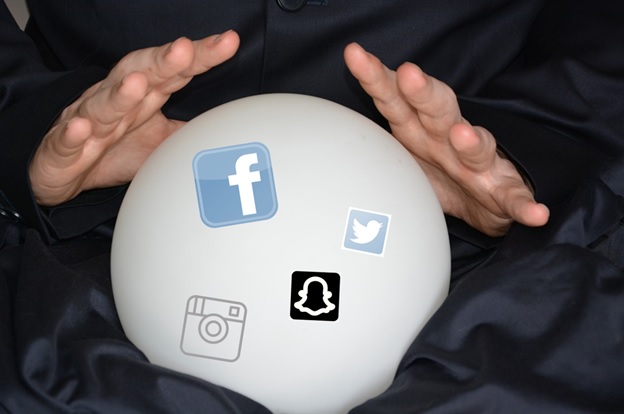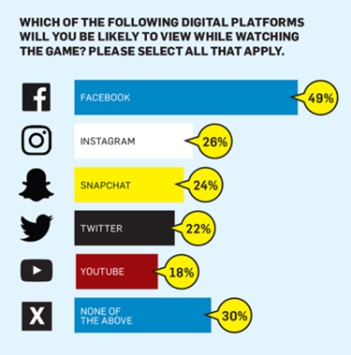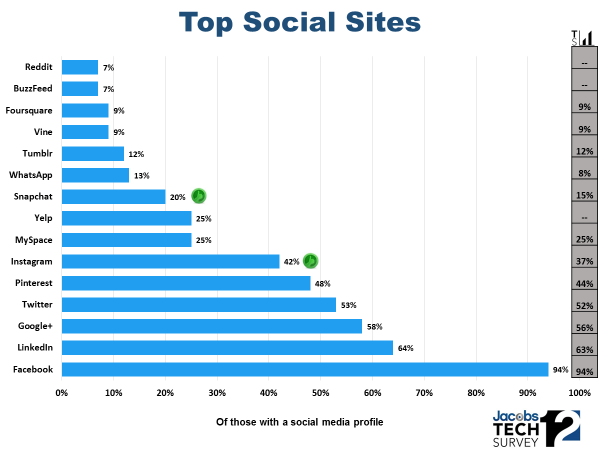
As is usually the case, the Super Bowl stands out as that rare event where the advertisements are often watched with the same interest as the game itself. Pre-promotion of many of these high-priced spots – the average rate is $5 million – has become a regular activity online and throughout the media world. And after the game is over, pundits and researchers break down the most and least effective and entertaining commercials.
Yesterday, we took a look at how Ford is using a very valuable Super Bowl slot to make a statement about its changing business plan. If that spot is well-accepted, it’s a smart plan. That’s because unlike any other event, this football game is an anomaly. Consider that a majority of viewers say they’re happy the Super Bowl isn’t commercial-free. Imagine that. A research study of Super Bowl viewers conducted by Penn Schoen Berland confirms that 53% would be disappointed by a game free of advertisements. (Don’t we wish the average morning radio show shared that characteristic?)
One of the changing elements of this mega-event is the social media piece. Each year it plays an even more important role in the game and in the way viewers interact with it. The aforementioned study also shows that nearly 9 in 10 social media users who watch the Super Bowl are interested in the extra content brands create around the game and their ads.
And more than one-fourth of regular social media users in the sample say they’ll be more active than they were during last year’s game. That ushers in a whole different conversation revolving around the social media platforms most preferred by Super Bowl viewers.
Given how much is riding on the event, it’s critical that brands are deploying human and financial resources toward the right platforms and social media users. A different national study commissioned by Adweek and designed by Survata focused more granularly on social media use around the big game.
The chart that jumped out at me is the pecking order of the projected channels that will draw the most views, posts, likes, and retweets.

The chart is similar to the ones we’ve been producing the last several years as part of our Techsurvey package, helping individual stations better understand their audience’s social media hierarchy.
Millions will be invested by mega-brands on social media in-the-moment activity, hoping to come up with that post, tweet, or reaction that “goes viral.” In both time, effort, and staff, a lot of effort and resources will be spent toward this amazing opportunity where last year, upwards of 168 million U.S. viewers watched the game.
But the key is knowing the audience’s social media platforms of choice. Ironically, Techsurvey is going strong as I write this post. More than 25,000 people from around the country have taken our survey. And there’s two weeks to go.
In just a couple of short months, we’ll publish social media usage data for our entire survey – as well as for a dozen formats – that provide this same social media pecking order for hundreds of broadcasters. The “secret sauce,” of course, will be ground-level, local market data, so stations in both Chicago and Cedar Rapids will know with certainty the social media players they should devote resources to, as well as those that simply aren’t that productive…at least for now. (The bar on the far right shows the same results from the previous year – which is why we gave the “thumbs up” to both Snapchat and Instagram, two platforms that showed growth year-to-year.)

Among all the other big news yesterday, Snapchat filed for an IPO valued (at least for now) at $3 billion. Just a few years ago, it was a platform being used by middle-schoolers. Today, as both charts and this Wall Street news indicates, it has emerged big-time, passing platforms like Twitter and others in usage and prominence. We’ve been tracking Snapchat for years, helping broadcasters understand emerging platforms (WhatsApp), along with those that somehow never managed to reach expectations (Foursquare).
Social media amplifies a brand’s presence and influence in a spectacle like the Super Bowl – if it is deployed intelligently, strategically, and cleverly. It starts with knowing where your fan base lives. And while Coca-Cola, Nike, M&Ms, and Starbucks will be staffed up and ready to go on Sunday, so too will hundreds of radio stations’ digital staffers and personalities.
In the social space, just like everything else, knowledge is power. Knowing how your audience will be using that “second screen” while watching the game is at the core of having a smart social strategy. A crystal ball is not required.
So, enjoy the game, fire off a savvy tweet, a snarky snap, or an Instagram photo of your party or favorite spread. And appreciate the fact that fans now have a major voice in the world’s biggest sports spectacle.
Thanks to social media.
- What To Do If Your Radio Station Goes Through A Midlife Crisis - April 25, 2025
- A 2020 Lesson?It Could All Be Gone In A Flash - April 24, 2025
- How AI Can Give Radio Personalities More…PERSONALITY - April 23, 2025




If it’s possible to break this down to its simplest form Fred, if we’re not in Houston this is by far one of the biggest TV events of the year. Millions will be parked in front of their big-screens. Simple. What else will they do? Eat chips. Drink beer. Laugh with friends. Oh yeah and someone will be sitting in the corner posting, tweeting and snapping stuff. I don’t know that-if I’m at a party-I want to create a play-by-play of said party…or if I want to read/view one. After the fact? Fun. The beauty of this event – is the center of the event serves to push TELEVISION…a broadcast medium..into the forefront. Snaps, Tweets, Posts are a byproduct of this event. The COMMERCIALS which will no doubt have zillions of comments will be the center-the posts a byproduct. Knowing full well the eyes of the world will first be aimed at a broadcast medium sends a message to radio. While we do all of the social stuff, where are the creators in our industry -those who create the events that the general public will want to share on their social media? This is what we can focus in on to tell our story and remind the general public that radio can (and is) FUN as well as “the home of easy relaxing all-hit with fewer commercial classic rock authority”. There was this day when we had the band “Extreme” come in and perform at a hotel after we showed the game on the big screen. It was our “EXTREME BIG-GAME PARTY”. You think that didn’t attract attention? Thanks, Fred. Please keep us thinking.
Thinking about radio content and promotion in the context of whether it’s big enough, exciting enough, and compelling enough to “go viral” isn’t a bad litmus test. Ninth caller contests aren’t going to change the world, especially in this environment. A little “extreme” thinking would be welcome. Many thanks, Dave.
Fred,
Great thought starters here. The “tune-in” for the commercials factor is fascinating. It demonstrates people will stick around for commercials that are actually creative and DON’T SUCK. You reference Ford which is hyping its 90 second “ad.” Budweiser is getting pre-game attention with its immigrantion themed spot. Several sites are “leaking” spots in advance. As if they’d get a C&D! What if we held every promo (and in a perfect world every spot) to the “buzz” standard. If we talked about it before playing it in full, then delivered on a promo/spot that was entertaining enough to keep the audience listening, how much would that change TSL or ATWE? Holding every produced piece to a “Super Bowl Standard” is a tall order, but succeeding 25% more often would likely make a difference.
Yes, it would be a start. It just seems counter-intuitive that radio spends SO much time, money, effort, and brain power trying to make stations as “PPM friendly” as possible, while ignoring such a large chunk of each hour. As you suggest, a 25% improvement in commercial quality would be a start. Consumers want to be stimulated and moved, whether it’s by a jock, a song, a topic – or a commercial. Thanks for connecting the dots.